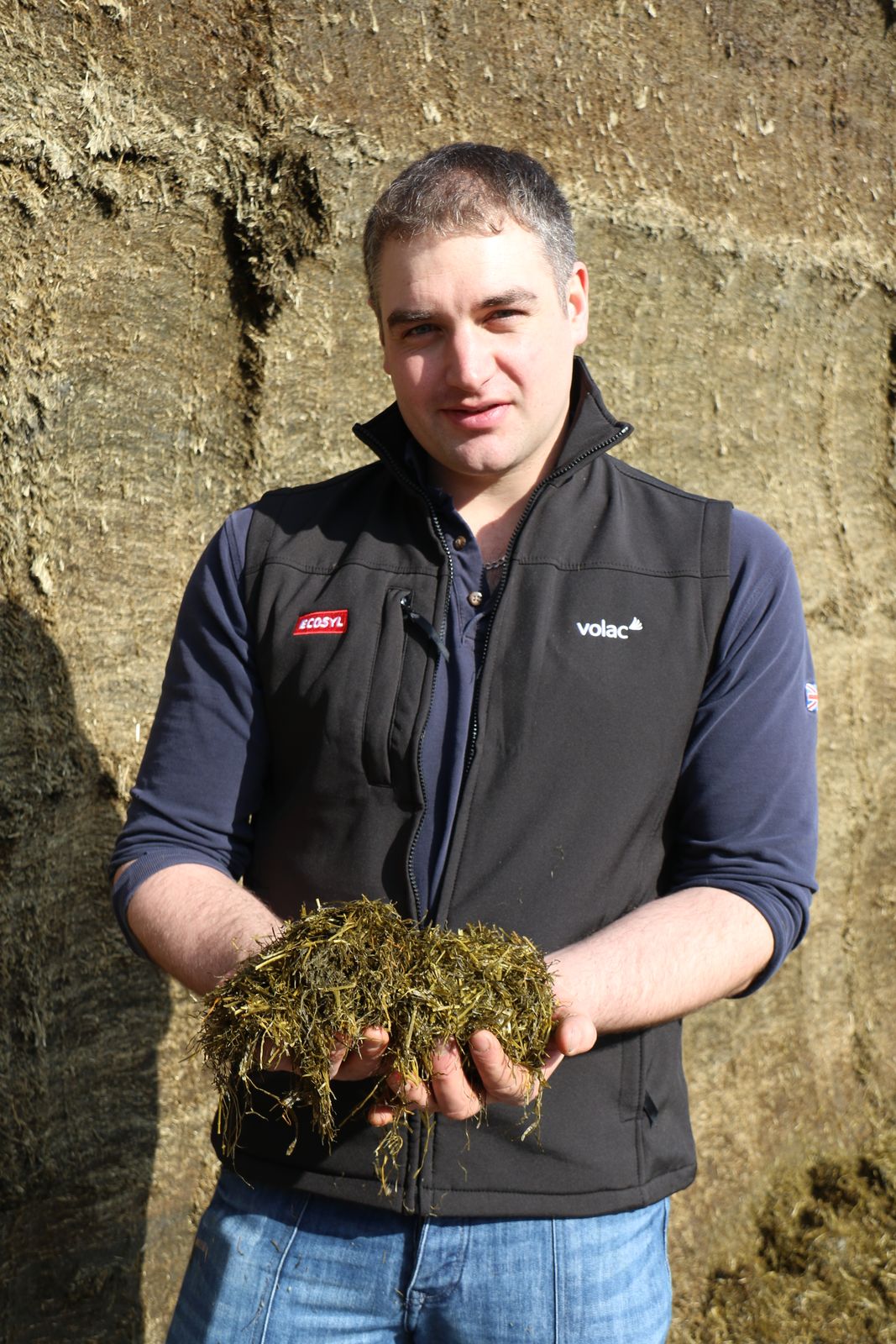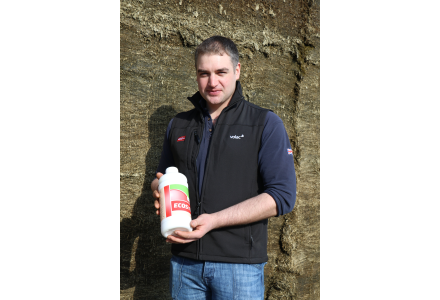Keeping a cool silage head against waste
20 June 2021
Want to keep the top of your grass clamp cool and totally free of waste? One farm manager has conducted his own clamp trial to find out how.

North Yorkshire farm manager Micheal Metcalfe, of JR Elliott, Bolton Hall Farms, Leyburn, admits to being very particular when it comes to making quality silage and conserving enough of it. And for good reason.
Taking over as farm manager four years ago, having originally started working on the farm in 2008, over the last year he has increased dairy cow numbers by 30%.
The increase is all part of a major restructuring. This has seen the business’s original 380-strong autumn block-calved Friesian x Montbéliarde herd added to with a further herd of 120 spring block-calved Jersey x Friesian x Holstein crosses.
Both milking herds are located on one unit, with the spring-calvers replacing a previous sheep flock. A second unit is reserved for youngstock. The changes have been implemented in order to gear the business up for the next three decades, says Micheal, after experiencing poor profitability from lambs.
By replacing spring lambing with spring-calving it allows the same workforce to continue to focus on one workload peak at a time,” explains Micheal, “with three months of spring calving and three months of autumn calving.
“It also helps to even out milk production over the year – with milk from both herds supplied to Wensleydale Creamery for cheesemaking.”
Focus on increasing milk from forage
With a firm focus on increasing milk from forage to reduce bought-in feed costs, the changes also enable the business to make optimum use of homegrown grass – by maximising milk from grazing with the spring-calving Jersey cross cows, which Micheal says are well-suited to a grazing-based system, and from silage with the autumn-calved herd.
The spring calvers only started calving in March, so it is too early for figures. However, out of the average 7,400 litres/cow yield for the autumn-calvers, 3,600 litres comes from forage, with butterfat and protein standing at 4.52% and 3.46% respectively.
The autumn-calvers are also housed as soon as they have calved in late August. Part of the drive for increased milk from forage has included changes in the way silage is made.
Two years ago we switched entirely to making our own silage,” explains Micheal, “and have had good results.
“We already had our own silage trailers, tedder, rake and a JCB to buckrake, so we invested in our own mower and teamed up with a neighbour who has purchased a self propelled forage harvester.
“Silage and grazing fields are reseeded every five years to maximise productivity, and we take four silage cuts a year, beginning in May and then cutting at roughly monthly intervals.
We’ve also started chopping grass slightly longer to reduce clamp slippage and have switched to using Ecosyl additive.”
Ecosyl as an integral part of the process
With Ecosyl an integral part of the process, Micheal says the silage has been stable. However last season he went to an extra level of detail – experimenting with using different additives in different layers of the clamp to see if this could further improve preservation at the top.

While one clamp was treated entirely with Ecosyl, a second was treated with Ecosyl up to about 75% capacity but a different additive, Ecocool, used for the top 25%.
Both additives contain tailored amounts of the beneficial bacterial strain, Lactiplantibacillus plantarum MTD/1, for improving fermentation. However Ecocool, designed for drier silages, also contains a second beneficial bacterial strain, Lactobacillus buchneri PJB/1, shown to reduce silage heating caused by aerobic spoilage. The decision to try Ecocool followed Micheal having previous experience of it for preserving wholecrop wheat.
By split-treating the grass clamp in this way, the aim was to achieve a top-class fermentation in the bulk of the clamp from the Ecosyl, while also achieving the best protection against heating and spoilage at the top, where it is more difficult to consolidate to remove air.
“The top of the clamp is the most susceptible to heating and spoilage,” explains Micheal. “We wanted to make the best silage possible, but do it as cost-effectively as we could.
“Although the clamp with the mixed treatment was first-cut and the clamp with all Ecosyl was second cut, they were ensiled at virtually identical dry matters of 32%, so it was a good comparison.
Silage analysis showed that quality between the two clamps wasn’t much different, but there was zero waste with the clamp with the Ecocool on the top.
In view of these results, Micheal ordered half his additive stock as Ecosyl for this year and half as Ecocool. “We want the two additives on site so we can choose the correct one according to how dry the grass is when it’s ensiled. Even if the silage is dry, we feel we can’t go wrong.
Putting the Ecocool on top gives a sort of a seal of cool silage at the top of the clamp. For us, this split approach is ideal because we have our own silage kit, so I’m going to stick with it. If you’re using a contractor, you might have to be more on the ball.
Using a split treatment technique
According to Volac business manager Jason Short who has been working with Micheal, with interest in producing more milk from forage and silage increasing, Micheal is not alone in trying a split treatment technique.
_listing.png?1624204860)
“Normally we recommend Ecosyl for grass up to about 30% dry matter if it’s well-consolidated,” explains Jason, “and Ecocool for drier grass and for wholecrop and maize. But if there is a risk of losses from heating, for example if grass is drier and chopped a bit longer which makes it more difficult to consolidate, then Ecocool is certainly a consideration.
Split-treating isn’t for everyone. For most grass silage made at about 30% dry matter, Ecosyl will be ideal. But if you’re really fastidious about silage-making, then treating the top few grass layers with Ecocool will certainly help to target any problematical heating.
At the end of the day, if you can get more out of silage by reducing losses and wastage, that has to be good for sustainability and the producer’s pocket.
Find out more about the Ecosyl range of silage additives.
Helping farmers make better silage
One of the biggest challenges in making great silage is that the conditions are always changing! It makes it very difficult to compare one clamp to another and to figure out what went well, and what needs improvement. There are however huge clues in the clamp that point to your current process, and the quality of the silage produced.
Our dedicated team of Ecosyl Silage Experts can help interpret this information, by looking at the physical characteristics of the silage and the clamp, and by looking at silage analysis data to understand the feed quality of what is produced.